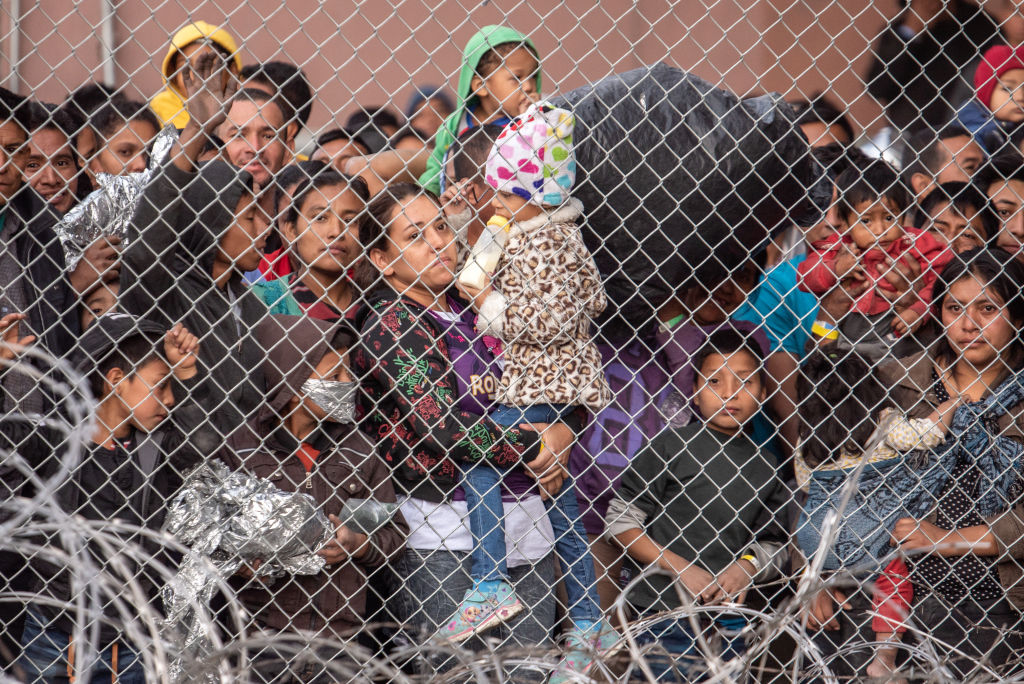Netherlands Plans Low-Security Detention Centers For Asylum Seekers

Table of Contents
The Rationale Behind Low-Security Detention Centers
The Dutch government's rationale for transitioning to low-security detention centers for asylum seekers rests on several key pillars: a more humanitarian approach, improved cost-effectiveness, and enhanced integration opportunities. This shift represents a departure from traditional high-security detention facilities, focusing instead on providing a more supportive environment while still maintaining necessary control over the asylum application process.
-
Reduced Costs: Operating low-security facilities is expected to be significantly less expensive than maintaining high-security prisons. This cost-effectiveness stems from reduced staffing needs, simpler infrastructure, and lower security expenses.
-
Improved Integration: By creating a less restrictive environment, asylum seekers will have greater opportunities to participate in integration programs. This includes access to language classes, job training, and social activities, fostering a smoother transition into Dutch society. Such programs are crucial for successful integration and reduce the long-term costs associated with unsuccessful asylum seekers.
-
Focus on Support Services: The emphasis will shift from strict confinement to providing essential services like healthcare, education, and legal aid. This approach prioritizes the well-being of asylum seekers and aids in expediting the asylum application process.
-
Streamlining the Asylum Process: By providing a more supportive environment, it is hoped that the asylum application process will become more efficient. Reduced stress and improved access to necessary resources could lead to quicker processing times.
-
Alleviating Overcrowding: Many existing detention facilities in the Netherlands are overcrowded. Low-security centers could offer a solution to alleviate this issue and improve living conditions for asylum seekers.
Features of the Proposed Centers
The proposed low-security detention centers in the Netherlands will differ significantly from existing high-security facilities. The aim is to create an environment that balances security with a focus on human dignity and integration.
-
Open Facilities: The centers are envisioned as less restrictive, with open spaces, communal areas, and potentially even some degree of freedom of movement within the facility. This stands in contrast to traditional, cell-based detention.
-
Security Measures: While less restrictive, security measures will still be in place. This might include perimeter fencing, surveillance technology, and a defined staff-to-resident ratio, tailored to the specific needs and risks associated with the population housed in each facility.
-
Essential Services: The centers will provide essential services, including healthcare, education, and language classes. Access to legal counsel will also be facilitated to support asylum seekers throughout their application process.
-
Community Engagement: The Dutch government plans to engage with local communities to build understanding and acceptance of the new facilities. This approach is crucial to ensuring successful integration and minimizing potential community resistance.
-
Monitoring and Evaluation: Robust monitoring and evaluation systems will be implemented to assess the effectiveness of the centers, track key performance indicators (KPIs), and identify areas for improvement. This data will be crucial in informing future policy adjustments.
Potential Challenges and Criticisms
Despite the government’s positive outlook, the proposal faces significant challenges and criticisms. Concerns center around security risks, public opinion, legal challenges, and the potential difficulties of managing diverse populations.
-
Security Concerns: Critics raise concerns about the potential for escapes and security breaches in less-secure facilities. Maintaining sufficient control while upholding a humane approach is a crucial balancing act.
-
Public Opinion: Public opinion plays a significant role. Negative public perception and potential backlash from local communities could hinder the successful implementation of the centers. Effective communication strategies are essential to address public concerns.
-
Legal Challenges: There's a potential for legal challenges relating to human rights and the rights of asylum seekers. Stringent legal compliance is essential to avoid litigation and maintain the ethical integrity of the project.
-
Managing Diverse Populations: Effectively managing a diverse population in a low-security setting presents operational challenges. Different cultural backgrounds, needs, and potential conflicts require careful consideration and sensitive management strategies.
-
Integration and Societal Acceptance: Ensuring successful integration and fostering societal acceptance of asylum seekers housed in these facilities is crucial. Failure to do so could create social tensions and undermine the overall objectives of the initiative.
International Comparisons and Best Practices
The Netherlands is not alone in exploring alternative approaches to asylum seeker detention. Examining international models and best practices can inform the design and implementation of its low-security facilities.
-
European Models: Several European countries have successfully implemented low-security or community-based alternatives to traditional detention. Analyzing their experiences and lessons learned is vital.
-
Best Practices: Best practices focus on creating a balance between security and humane treatment. This includes providing access to essential services, facilitating integration programs, and ensuring transparent and accountable processes.
-
International Legal Frameworks: International legal frameworks, including the 1951 Refugee Convention and the European Convention on Human Rights, guide the ethical treatment of asylum seekers. Compliance with these frameworks is paramount.
-
Successful Integration Programs: Studying successful integration programs across Europe and elsewhere can provide valuable insights into effective strategies for assisting asylum seekers in settling into their new environment.
Conclusion
The Netherlands' plan to introduce low-security detention centers for asylum seekers marks a bold attempt to reform its immigration policy. The initiative aims for a more humane and potentially cost-effective approach compared to traditional high-security detention. However, the success of this plan hinges on effectively addressing the inherent challenges related to security, public acceptance, and legal compliance. Careful planning, proactive community engagement, and ongoing evaluation will be crucial to ensure the centers serve their intended purpose: providing a safe, supportive, and humane environment for asylum seekers awaiting processing while also mitigating potential risks.
Call to Action: Stay informed about the developments regarding the Netherlands' plans for low-security detention centers for asylum seekers. Understanding the nuances of this policy shift is essential for a productive discussion on effective and humane asylum procedures. Learn more about the impact of low-security detention centers on asylum seeker integration and the ongoing debate surrounding Netherlands' refugee policy.

Featured Posts
-
 John Wick 5 Keanu Reeves Update On The Future Of The Franchise
May 12, 2025
John Wick 5 Keanu Reeves Update On The Future Of The Franchise
May 12, 2025 -
 Senator Collins And 2026 Assessing The Path To Re Election
May 12, 2025
Senator Collins And 2026 Assessing The Path To Re Election
May 12, 2025 -
 Uruguay Y China Un Regalo Peculiar Para Fortalecer El Comercio Ganadero
May 12, 2025
Uruguay Y China Un Regalo Peculiar Para Fortalecer El Comercio Ganadero
May 12, 2025 -
 Is John Wick 5 Actually Happening A Look At The Latest News
May 12, 2025
Is John Wick 5 Actually Happening A Look At The Latest News
May 12, 2025 -
 L Autruche De Mask Singer 2025 Devoilee La Reaction De Chantal Ladesou Et La Surprise De Laurent Ruquier
May 12, 2025
L Autruche De Mask Singer 2025 Devoilee La Reaction De Chantal Ladesou Et La Surprise De Laurent Ruquier
May 12, 2025
